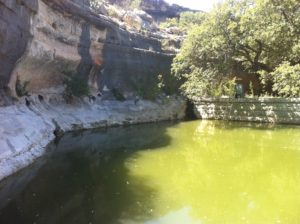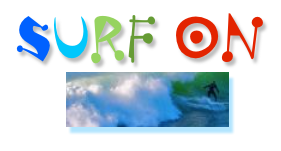

The Marfa Mondays Podcasting Project–24 podcasts apropos of my book in-progress on Far West Texas –21 podcasts posted to date– has a shiny new website, right here within www.madam-mayo.com. (Up there on the menu, click PODCASTS, et voilà.)
If the Marfa Mondays Podcast is new to you, it covers a region of gobsmackingly gorgeous skies and landscape, and interviews with and profiles of people as varied as artists, rockhounds, scientists, pitmasters, poets, rodeo riders, and so many more. I invite you to listen in anytime on iTunes or Podomatic (see all links listed below).
Why the new website when I already had one? I’ll spare you the snore-worthy story about my PC’s website software, so antique that Tutanhkamen’s grandma’s grandpa would have used it, and which I still use for my now 21-year old (and giwiggynormous) www.cmmayo.com, whence “Marfa Mondays” was parked. Suffice to say, now that I am working on a MacBook Pro, there’s a hippopotamus on my “to do” list; meanwhile, I’ll be better able to keep “Marfa Mondays” updated here on www.madam-mayo.com, which uses WordPress.

Here’s the line up of Marfa Mondays podcasts so far:
21
Great Power in One: Miss Charles Emily Wilson
Podomatic | iTunes | Transcript
“There is great power in one. This is what I always want, that one more person should know our story.”
Miss Charles Emily Wilson, quoted in Jeff Guinn’s Our Land Before We Die
20
Raymond Caballero on Mexican Revolutionary General Pascual Orozco
and Far West Texas
Podomatic | iTunes | Transcript
“There were a lot of Mexicans very upset over the killing of Pascual Orozco… it was a huge controversy… In El Paso, in San Antonio, in Mexico City even President Carranza was asking for explanations… they wanted an investigation. So what happened was, ‘whoa! We didn’t kill some ordinary horse thief, we killed General Pascual Orozco, the biggest military hero of the early part of the Revolution! And what happens if the Mexicans in El Paso are able to pressure officials and they start a grand jury investigation there?’ As a result of the concern that they had, the Sheriff of Culberson County did something very unusual…”
Raymond Caballero
19
Pitmaster Israel Campos in Pecos
Podomatic | iTunes | Transcript
“Keep it simple. Cook with wood. Can’t beat it. No gas. Just wood. Keep it like the old days.”
Israel Campos
18
Lisa Fernandes at the Pecos Rodeo
Podomatic | iTunes | Transcript
“Everybody wants to win Pecos. I mean, anybody who’s ever rodeoed in the world wants to win the Pecos Rodeo…You can ask anybody who knows anything about rodeo in the world, and they will tell you that Pecos, Texas is special.”
Lisa Fernandes
17
Under Sleeping Lion: Historian Lonn Taylor in Fort Davis
Podomatic | iTunes | Transcript
“Everybody kind of has a stereotype of Marfa either as the cattle town where they filmed ‘Giant’ or a contemporary art center. I like discovering things that don’t fit into that stereotype.”
Lonn Taylor
16
Tremendous Forms:
Paul V. Chaplo on Finding Composition in the Landscape
Podomatic | iTunes | Transcript
“On a list of the world’s largest super volcanoes, the Chinati caldera is near the top of the list, and when the Chinati erupted about 32 million years ago, the force of the eruption was greater than Vesuvius and greater than Krakatoa. To think that that happened just southwest of Marfa is mind-boggling”
Paul V. Chaplo
15
Gifts of the Ancient Ones:
Greg Williams on the Rock Art of the Lower Pecos Canyonlands
Podomatic | iTunes | Transcript
“When I drive out here from San Antonio… I love rock and roll. I love old rock and roll music, it’s playing all the way. When I hit the Pecos River, I turn the music off and I usually roll the windows down. I don’t care how hot it is. I turn the air conditioner off and I usually drive way under the speed limit and then I become… at that point it’s not about me. At that point I become the smallest thing here and everything out there is bigger than me, everything out there has something to teach me or to show me”
Greg Williams
14
Over Burro Mesa / The Kickapoo Ambassadors
Podomatic | iTunes | Transcript
“No sign of burros on Burro Mesa. In two hours in this merciless landscape, we had seen no animal tracks, no scat; one lizard; one butterfly; two ravens”
13
Looking at Mexico in New Ways:
An Interview with Historian John Tutino
Podomatic | iTunes | Transcript
“I got to the point where I said, ‘The whole basic big picture of where we thought Mexico fit in the world is somewhere between wrong and mythical.” And you can’t change that by chipping away at the edges and saying, ‘look at this little piece.’”
John Tutino
12
This Precious Place: An Interview with Dallas Baxter,
Founding Editor of Cenizo Journal
Podomatic | iTunes | Transcript
“I really love this place out here, and I love the way it looks. I like the way it smells. I like to go outside at night and just look at the sky and feel the wind, and I think it’s a really precious place, and I think it’s a precious place because of what has come before and because of what’s here now.”
Dallas Baxter
11
Cowboy Songs by Cowboys
and an Interview with Michael Stevens
Podomatic | iTunes | Transcript
“They love the job they do. They love their animals. They appreciate the land. Have you driven around the country and seen cowboy churches? Have you ever seen a farmer church? I never saw anybody sing about their tractor! You know, the sailors sing about their ships, but the cowboys, they love that.“
Michael Stevens
10
A Visit to Swan House
Podomatic | iTunes | Transcript
“When Simone Swan was living in New York, a house with two courtyards came to her in a dream. And it seemed like a dream to me that, less than a year after I’d first glimpsed Swan House from the road, I was sitting with its owner in the Nubian vault that was the living room, the shell high above us aglow with the orange light of morning…”
9
Mary Baxter, Painting the Big Bend
Podomatic | iTunes | Transcript
“What is this human urge that you want to record what you see? It must go back to prehistoric times when people painted on the cave walls the animals that they saw. So I can’t explain why we do it. You know, nothing is as good as being there and seeing it, just being in the landscape. But there’s this urge to say, ‘I’d like to try to translate this. These colors, or these shapes, or these animals, and this moment, and at this place.”
Mary Baxter
8
A Spell at Chinati Hot Springs
Podomatic | iTunes | Transcript
“I walked down the arroyo through low canyons of limestone, watching out for Nelson, the famously cantankerous wild burro, who never did appear. It was not an easy hike because of the stones— all sizes, shapes, and many colors—and the puddles, and mud, and braids of water still flowing after the past weeks’ rains. In a leisurely, zigzag-y half an hour, I arrived at the Private Art Gallery…”
7
We Have Seen the Lights:
The Marfa Ghost Lights Phenomenon
Podomatic | iTunes | Transcript
“One time, very early in the morning, when he was driving a school bus from Marfa to Presidio, he saw in the rear view mirror that a big orb had appeared on the highway. It followed the bus, and then it came closer… And then it moved inside the bus.”
6
Marfa’s Moonlight Gemstones:
An Interview with Paul Graybeal
Podomatic | iTunes | Transcript
“What got me into a rock shop is collecting agate as a hobby when I first moved out here in the ’80s. Of course, I grew up in the Black Hills and that’s real rich in minerals and of course, fossils in Badlands and all that sort of stuff, so at a very young age I’m sure I was exposed to looking at the ground and looking for treasures on the ground…”
Paul Graybeal
5
Cynthia McAlister with the Buzz on the Bees
Podomatic | iTunes | Transcript
“There are thousands kinds of bees out there… And the one I always like to tell people about first is the bright green iridescent sweat bees… Of course, bumblebees, the big black and yellow fuzzy, black and yellow bees. And then around here, a lot of people, I’m sure, are familiar with the big shiny black carpenter bee that digs a hole out here in agave stalks and yucca stalks and dry sotol stalks… “
Cynthia McAlister
4
Avram Dumitrescu, an Artist in Alpine
Podomatic | iTunes | Transcript
“When we moved to Alpine, our landlords had about 30 chickens. Patty and Cindy, they’re on the west edge of town…that’s where I had my first experience being around chickens, because until then it was just stuff I’d eat. They’re basically mini-dinosaurs. Every time I go in, I’m always worried if I fall, and they start pecking me to death like in some horror movie… because they see red, they run to it and attack it. They’re very interesting characters, and I think what really made me laugh was Patty and Cindy had named them after characters from ‘The Sopranos.’”
Avram Dumitrescu
3
Mary Bones on the Lost Art Colony
Podomatic | iTunes | Transcript
“Julius Woeltz is my favorite… He was really known as a fine muralist. I think he painted well over 30 murals in his lifetime. He was very much was influenced by Rivera and Orozco. He and his very good friend, Xavier González, spent many summers down in Mexico and Mexico City looking at the muralists…”
Mary Bones
2
Charles Angell in the Big Bend
Podomatic | iTunes | Transcript
“I just love to be in the river. It’s like the best seat in the house for the Big Bend, I think. You can see canyon walls. You see desert. You see riparian zones. There’s more wildlife there than anywhere else, and even if it’s a really, really hot summer day, you can stay cool.”
Charles Angell
1
Introduction and Welcome
Podomatic | iTunes | Transcript
(Want to be alerted when the next podcast is available?
I invite you to sign up for my newsletter.)

Waaaay Out to the Big Bend of Far West Texas,
and a Note on El Paso’s Elroy Bode
A Review of Patrick Dearen’s
Bitter Waters: The Struggles of the Pecos River
Find out more about
C.M. Mayo’s books, articles, podcasts, and more.



